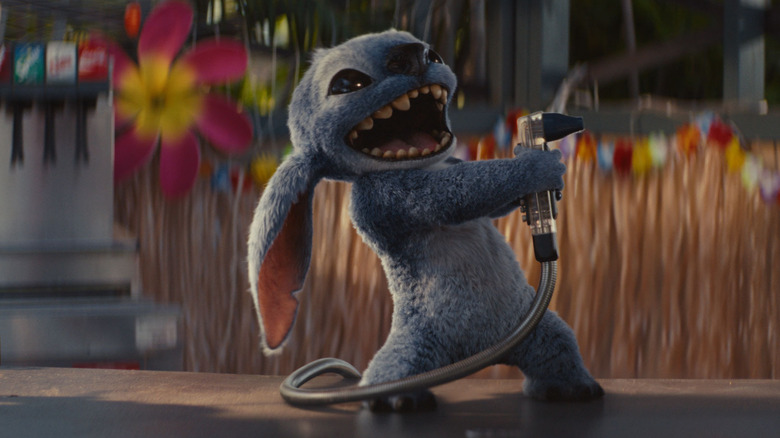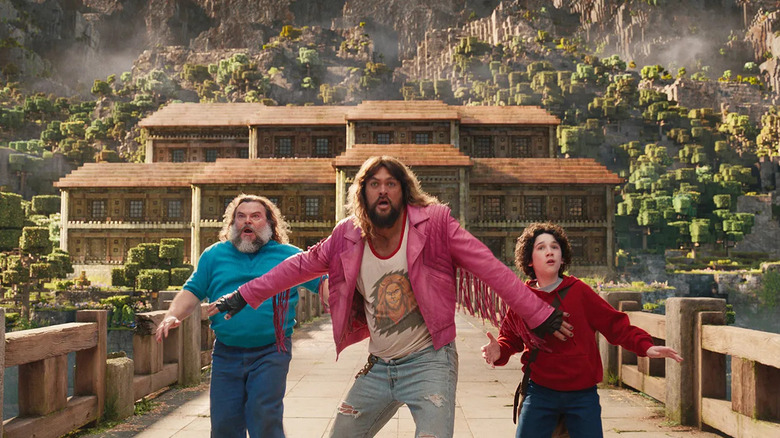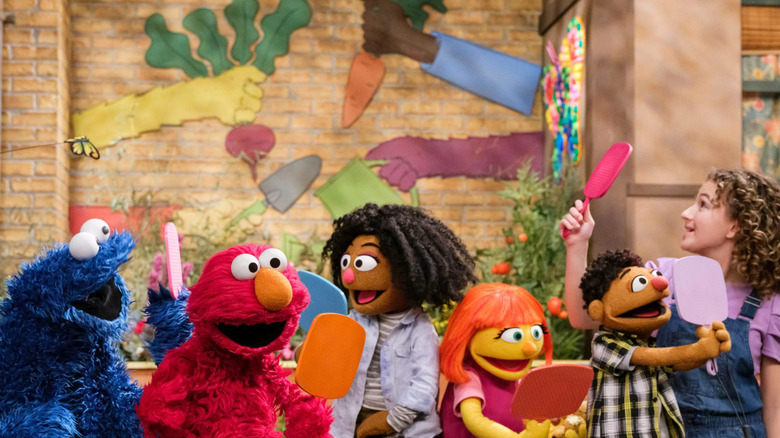The Fans Angry At The Live-Action Lilo & Stitch's Box Office Success Are Missing The Point
Over Memorial Day weekend, "Lilo & Stitch" grossed nearly $150 million dollars, despite being a perfectly average movie (albeit one with questionably offensive plot changes from the original). On the holiday proper, it had the fourth biggest box office gross on a Monday, ever, surpassing films like "Spider-Man: No Way Home" and "Avengers: Endgame." It's unsurprising because A) it's a movie that has the benefit of being recognizable IP that sparks generational love, B) Stitch is so cute and marketable that he rivals Mickey Mouse in popularity internationally, and C) it had zero competition in a barren media landscape for younger audiences. Cartoon Network is being deprioritized, the G-rating has all but completely died, all-ages entertainment has been reworked to mean "four quadrant blockbusters," and the consequence is that children's entertainment is now in a state of cultural malnourishment.
Sure, there are worthwhile options on streaming, but a one-time charge to go to the movies is sometimes more cost-effective for a family than a continuous monthly charge for a streaming service. This means that for parents who want to foster a love of cinema and instill a passion for going to the movies with their little ones, the options for truly kid-friendly films are limited. As a result, when there is a genuinely family-friendly film available to see in the theaters, parents and kids turn out in droves, the films make a ridiculous amount of money at the box office, and the studios (mostly Disney, if we're being honest here) are incentivized to continue the cycle.
Of course, cultural enrichment beyond the multiplex matters — museums, libraries, zoos, parks, etc. — but weaponizing deprivation, as some folks are currently suggesting as a way to punish Disney into making more original films, is ethically bankrupt, because it requires children to bear the consequences of capitalism's failures and studios' creatively conservative cowardice. Expecting parents to boycott the only family film available feels less like a protest and more like a form of punitive abstinence that punishes children for the failures of intentional, structural trappings laid by the industry. "Vote with your dollar" only works when there's another option.
The lack of competition forces a scarcity mindset
In a capitalist society (which we are forced to endure), a healthy competitive market forces studios, streamers, and networks to reach a standard of quality to attract customers over their competitors. However, when the market is monopolized and there is no direct competition, there is no motivation for a studio to maintain a standard of high quality. Before "Lilo & Stitch" hit theaters, the theatrical films for young audiences released in 2025 were "Dogman," which hit theaters in January, "Snow White" in March, "The Minecraft Movie" at the start of April, and "The Legend of Ochi" in the middle of April (that last one albeit with a much smaller marketing campaign and in significantly fewer theaters than the aforementioned releases).
But let's be honest: The issue isn't that kids are consuming media that isn't intellectually challenging — we all gobbled up our fair share of junk programming as kids — but that today's youth are being fed homogenized, uninspired media with few diverse, meaningful stories to offset the slop. Children are one of society's most marginalized and vulnerable groups, and a general sense of disdain for children is both explicit and systemic, reflected in the entertainment industry's disinclination to prioritize innovative integrity in children's media and the American legal system's lack of protection.
The Children's Television Act of 1990 mandated that there would be a protected spot in broadcasting "core programming" around 30 minutes long that required media "specifically designed to serve the educational and informational needs of children 16 years of age and under, including the child's intellectual/cognitive or social/emotional needs." This call inspired the creation of shows like "The Magic Schoolbus" and "Bill Nye the Science Guy," but even then, many broadcasting networks fought like hell against the requirements. The regulations were revamped in 1996, when the FCC ordered all commercial television stations must broadcast at least three hours of core educational programming per week, regularly scheduled between the hours of 7:00 a.m. and 10:00 p.m. But in 2019, the FCC under the Trump administration decided to "provide greater flexibility" with that regulation to accommodate the popularity of streaming services, overlooking the fact that not everyone can afford multiple — or even one — streaming service with access to educational children's media. In the pre-streaming era, a cash-strapped family could ostensibly afford the one-time payment of a TV set and an antenna, and would subsequently receive over-the-air broadcasts from the major networks for free. Analog signals were officially cut off in 2009, as the world transitioned to digital.
By assuming streaming was the death knell of television broadcasting, the standard of responsibility for broadcasters plummeted ... and then the COVID-19 pandemic happened, and an entire generation of children's formative years were spent surrounded by screens with a lower requirement for accountability in making quality media for young audiences.
Children's entertainment is in a perfect storm of bad decisions
While the MPA rating system is imperfect at best and totally useless at worst, the number of films released theatrically with a G-rating (for general audiences) is almost non-existent. In 1968, there were 181 films released with a G-rating, but in 2024, only five films nabbed a G-rating, and two of them were documentaries. (Granted, what constituted a G rating back then is wildly different than what we have today thanks to the advent of PG-13.)
The overwhelming majority of films for young audiences are given a PG rating, and the average parent has no problem bringing their children to a movie like "Sonic the Hedgehog 3," "Moana 2," or "Kung Fu Panda 4" as a PG-rated movie, but the PG rating has become the new standard for "kiddie movies" while four-quadrant blockbusters overwhelmingly target the PG-13 audiences. This means we've all but rotted the concept of an all-ages or "family" movie. Even an exception like "Wicked: Part One," which received a PG rating, doesn't quite fit the mold because it boasts a two hour and 40-minute runtime — a bit too long for most little ones to sit through.
Parents are stuck between a rock and a hard place; studios are not sending their best in terms of children's entertainment because they don't have to, and the standards for programming on TV are becoming non-existent — so much so that when the FCC argued to roll back the restrictions of the Children's Television Act in 2019 for commercial broadcasters, they specifically identified PBS as a primary source of educational television to justify the erosion. Yet in 2025, the Trump administration is butchering the budget for PBS, citing concerns of "woke propaganda." (Thankfully, Netflix is helping with "Sesame Street.")
The villains in this "Lilo & Stitch" situation aren't the parents trying to bring joy to their children, they're the profit-obsessed executives, risk-averse studios, and legislative doormats who have completely abdicated their cultural responsibility to provide quality content for children. It's no surprise that two of the most popular and beloved figures of children's programming, Ms. Rachel and "Bluey," are both programs produced outside of the corporate entertainment machine. Blaming parents for "perpetuating the cycle" is convenient and puts the onus on individual consumers instead of focusing ire on the correct target: a media ecosystem designed to give scraps, knowing the audience will feast upon it because otherwise, we'll starve.


